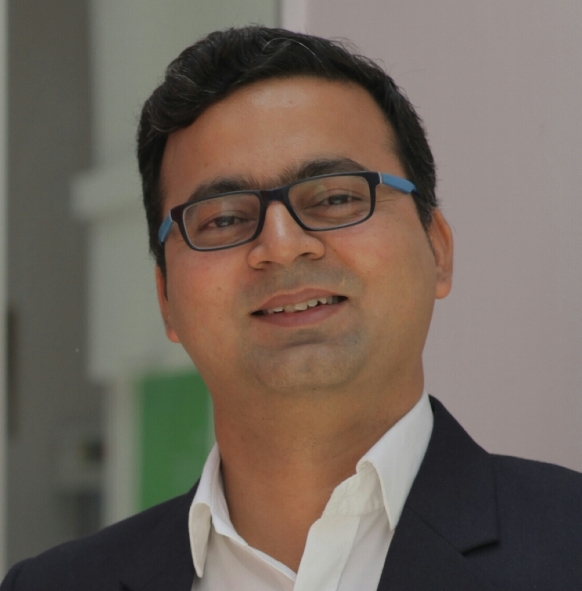
Associated with Amp Energy Group of Canada, Amp Energy India is a balanced renewable energy-based IPP with a portfolio of over 1.5 GW, spread across the country. Amp Energy India has developed a specialized line of business of setting up Open Access-based solar power plants for its customers. In this exclusive exchange, we have Shriprakash Rai, Head, C&I Business, Amp Energy India, telling us about his company’s activities and future plans, whilst giving a detailed account of the OA-based line of activity.
Let us start by getting a background on your principals Amp Energy Group based in Toronto, Canada.
Amp Energy India is associated with Amp Energy based in Toronto, Canada. With about $2 billion total capex financed globally, Amp Energy is a global energy transition platform backed by leading investors such as the Carlyle Group with a focus on the key renewable markets such as US, Canada, India, Japan, Spain and Australia globally.
As we broadly understand, Amp Energy India is an IPP that sets up Open Access (OA)-based solar plants for clients. Please explain how the OA system works, especially for procurement of renewable energy.
Amp Energy India is a balanced renewable energy player which offers solutions to both C&I and utility customers. We offer a complete end to end solution to our customers from onsite, offsite (intrastate) to ISTS (interstate) or VPPA projects. In the open access system which is an offsite system, the customer enters into a power purchase agreement with the developer and the renewable power generated from the plant is wheeled using the state transmission system (intrastate) or central transmission system (interstate).
Traditionally, Open Access refers to the phenomenon when a consumer purchased electricity from another state, and paid OA charges to the local discom. How different is green energy open access, as envisaged by the green energy open access regulations of August 2021?
Open access can be both intrastate and interstate, which means the consumer can purchase the power generated in the same state or another state and is liable to pay the OA charges accordingly. Green energy open access is the same except that the energy being wheeled comes from a renewable power plant. However, currently interstate OA for green energy transactions is opening up.
Tell us about the current portfolio of OA-based solar plants of Amp Energy India. What is the geographical spread, and who are your prominent customers?
As stated earlier, Amp Energy India has a balanced portfolio of C&I and utility customers. With a pan-India focus and presence across 15+ states in the country, we have developed a portfolio of about 1.5GWp+ projects.
Also read: Amp Energy Commissions Open-Access Solar Project For Bosch
Given that your OA-based projects are spread across multiple states, do you find state-to-state variation in policies on green energy open access?
Yes, definitely. Power being in the concurrent list, states have complete freedom to steer the sector in their area. So, there are some states that are progressive and forward looking. They have accepted the renewable energy transition in the country and are contributing to this shift. But then there are other states that are restrictive and make the proposition unviable and unattractive for customers.
What is Amp Energy India’s total solar power portfolio currently? What is your total renewable energy portfolio, including non-solar projects if any?
Our total portfolio is 1.5GW+ of assets which consists of solar, solar wind hybrid and BESS projects and includes both onsite and offsite installations. Having said that, we can meet all the renewable energy needs of our customers using technologies such as solar, wind, hybrids, storage and energy management for their long-term, medium-term and short-term requirements.
Amp Energy India has a captive OA-based power project in Uttar Pradesh. What does “captive” exactly mean in this context?
In the case of a captive project, power generated from the facility is being consumed by the customer. In a captive arrangement, 26 per cent of the equity investment, which is around 7.8 per cent of the total project cost is to be put in by captive consumer and at least 51 per cent of the power generated from the plant will have to be consumed by the customer, on annual basis
Given that Amp Energy India has projects spread over 15 states, which would you regard as progressive states in terms of IPP-friendly policies for solar energy?
For onsite projects almost all states have favorable policies but when it comes to OA, states such as Maharashtra, Karnataka, Tamil Nadu, Uttar Pradesh, Chhattisgarh, Gujarat, etc are IPP friendly. They have favourable policies that encourage developers like us to install projects in the state.
How do you see Amp Energy India’s current portfolio of 1.5+ GW shaping up in the coming years? Would solar be the dominant constituent? Please discuss, in brief, your growth plans in other areas like wind, hybrid, energy storage, etc.
Our medium-term plan is to scale up to 5 GW in five years with a balanced portfolio of assets using different technologies. Solar would play a key role in scaling up the portfolio but other technologies such as hybrids and batteries would help us offer more reliable and dispatchable solutions to meet the round-the-clock requirements of our customers.
Do you foresee Amp Energy India making a significant contribution to the global portfolio of Amp Energy Group, in the foreseeable future?
India is a key market for Amp Energy. Amp Energy India has made a significant contribution to the portfolio of Amp Energy and is consistently adding to the global portfolio as it embarks on its growth journey.
Photographs show some of Amp Energy India’s Open Access-based solar power projects.
